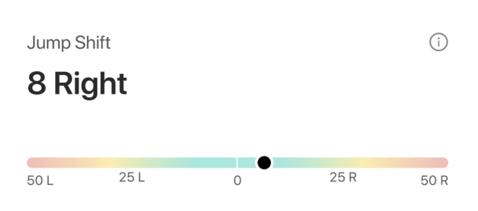Jump Shift represents an individual's limb preference during dynamic movement by assessing lateral shift during the Jump Scan.
Jump Shift: magnitude of lateral shift during loading (eccentrically)
Jump Shift represents the lateral shift of movement during loading. Higher values indicate a larger lateral shift, with typical values ranging between 0-10.
Jump Shift is displayed as an adjusted t-score that reflects the magnitude of lateral shift during the jump. Measured during the down phase of the jump, Shift reflects how far an individual’s center of pressure (CoP) shifts laterally toward a “preferred” side/limb to start a movement. Values for Jump Shift typically range between 0 and 10 with higher values reflecting greater asymmetry. Small variations in Jump Shift are common in people subjected to repeated testing and are typically not significant.
There are cases, however, where subjects are unknowingly compensating with a better side, and where high Jump Shift may reveal opportunities to improve overall movement function. Context knowledge of the subject is therefore important in using asymmetry information.
Read More:
- Assessing Limb Asymmetry
- Utilizing and Interpreting the Jump Scan
- The Jump Scan
- Vertical Jump Testing

